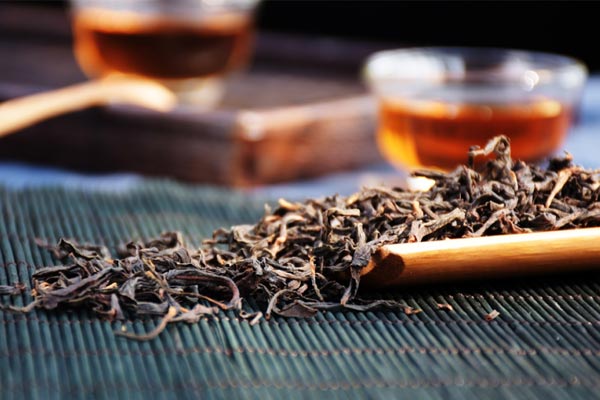When mentioning Wuyi Rock Tea, its rich, sweet flavor with a unique aroma, seemingly imbued with the spirit of Narcissus—the "rocky charm"—always leaves a lasting impression.
The complex geographical environment of Wuyi Mountain means that even the same tea variety can exhibit variations when planted in different locations. The saying "Tea grows on every rock, each with its own name" is a favorite among tea enthusiasts.
Recently, a research team from Longyan University published a research paper in the *Journal of Applied Research on Medicinal and Aromatic Plants*: "Integrated metabolomics reveals age-specific volatile signatures and soil-aroma correlations via altitudinal and developmental modulation of phytochemical profiles in Camellia sinensis". Using Wuyi Narcissus Tea as the research subject, this study revealed the influence of tree age, altitude, and soil on the aroma and nutritional characteristics of tea.

◆ Research Results
01. Tree Age
Researchers harvested fresh leaves from new and old tea trees at different altitudes in Wuyi Mountain. The new tea trees were planted in 2014, while the old tea trees were planted in 1980.
Instrumental analysis revealed significant differences in metabolites and aroma between the two types.
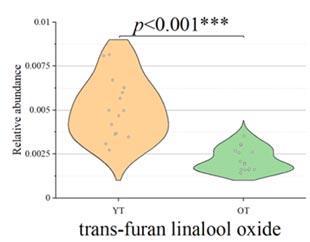
Differences in linalool oxides between new and old tea trees
The fresh leaves of young tea trees contain higher levels of volatile terpenes, such as linalool oxide, which has a fresh floral aroma; aromatic alcohols, such as benzyl alcohol, which has cherry and rose aromas; and caffeine, which has a stimulating effect.
The combination of these substances gives young Narcissus Tea a fresh floral and fruity aroma after brewing, with a crisp taste and a fresh, lively feel, as if it were just picked.
The study also found that young tea leaves have significantly higher levels of low-molecular-weight alkanes, which is key to maintaining their fresh and tender taste.
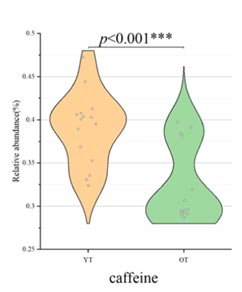
Difference in caffeine between new and old tea trees
Older plants, on the other hand, tend to be more mellow.
Fresh leaves accumulate more saturated fatty acids, such as hexadecanoic acid, and antioxidant phenols, such as sesamol for its nutty aroma, as well as high-molecular-weight alkanes.
These substances give aged Narcissus tea its fruity and woody aromas, a smoother taste, and stronger antioxidant capabilities; essentially, as the tea tree ages, its vitality is transformed into a stable nutritional power.
02. Altitude
The altitude of Wuyi Mountain ranges from 200 meters to 800 meters. The study found that altitude has a more significant impact on young tea trees, while its effect on older tea trees is less pronounced.
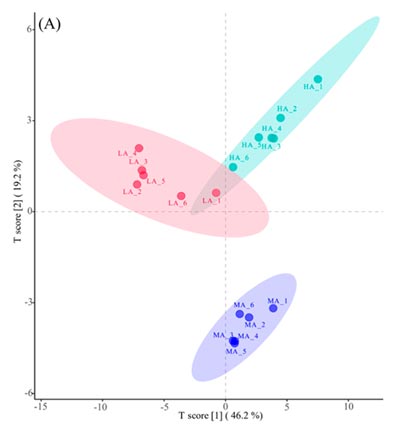
Altitude has a significant impact on young tea trees.
For young tea trees, tea gardens at high altitudes (600-800 meters) have lower temperatures and stronger ultraviolet radiation, causing young tea leaves to actively synthesize more stress-protective substances. This not only helps the tea leaves withstand harsh environments but also makes the floral and fruity aromas more intense, resulting in more prominent floral and fruity notes after brewing.
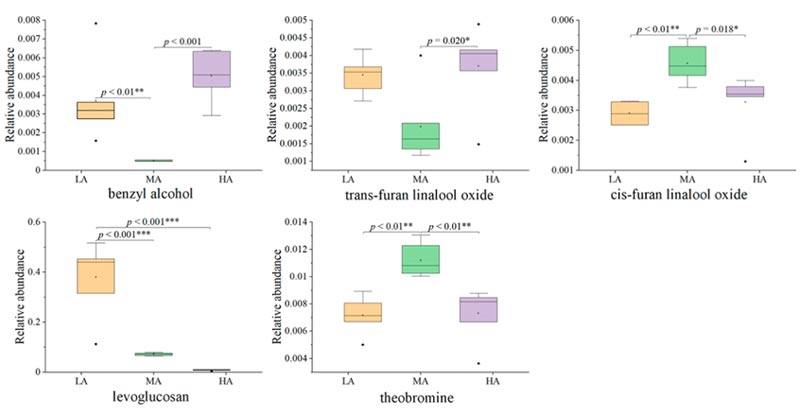
Altitude affects the metabolites of young tea trees.
In contrast, tea gardens at lower altitudes (200-400 meters) have higher temperatures, causing the tea leaves to accumulate more glucosinolates, resulting in a more pronounced fragrance and a fresh, grassy taste.
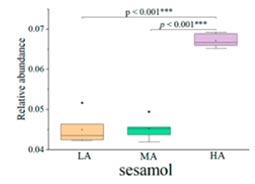
High-altitude old tea trees have significantly higher levels of sesamol.
However, for old tea trees, whether grown at 200 meters or 800 meters, the changes in their metabolites are minimal. Only at high altitudes does the content of sesamol, an antioxidant, increase slightly.
This is like old tea trees possessing stable internal strength, able to buffer against environmental fluctuations caused by altitude, and consistently maintain their mellow and rich character.
03. Soil
Soil is the source of nutrition for tea trees. Data analysis revealed that three soil indicators have the most significant impact on tea aroma.
First, soil pH is closely related to the fruity aroma of tea.
Slightly acidic soil can activate a key enzyme in tea, acyltransferase. This enzyme promotes the synthesis of esters, which are the source of fruity aroma.
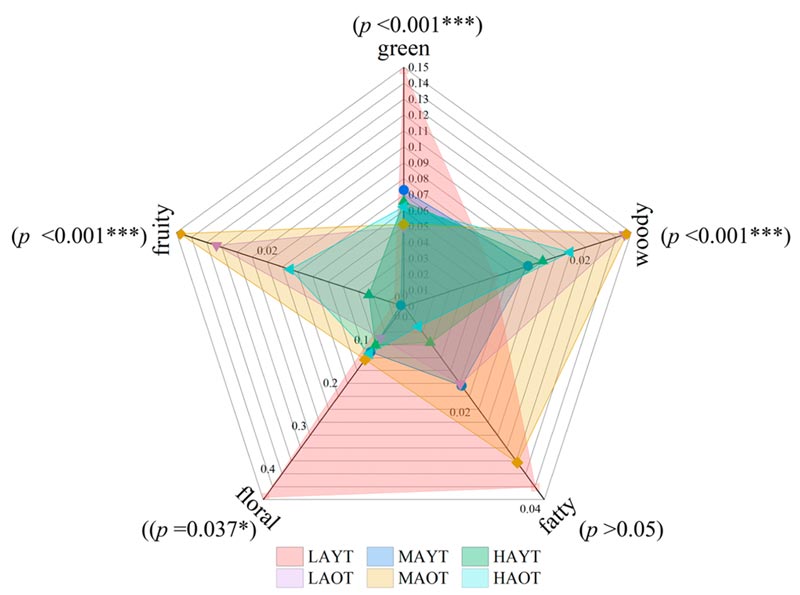
Aroma characteristics of tea trees at different altitudes and ages
Second, available nitrogen (AN) and available phosphorus (AP) in the soil are positively correlated with the lipid aroma of tea.
These two nutrients can activate lipid metabolism in tea, promoting the synthesis of fatty acid methyl esters. This substance has a faint oily aroma and makes the tea soup smoother.
In the study, tea gardens that received balanced nitrogen and phosphorus fertilizer (N:P₂O₅:K₂O=15:15:15) exhibited a more pronounced lipid aroma in their tea leaves.
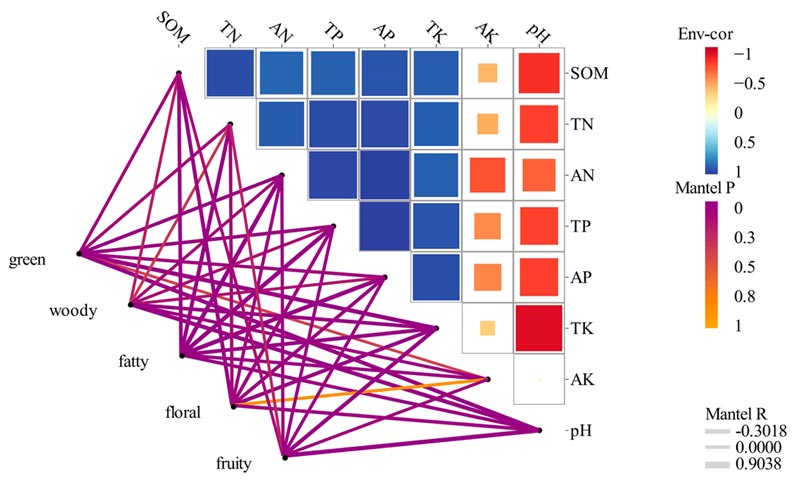
Correlation between Soil Indicators and Tea Aroma
Finally, soil organic matter (SOM) is a key contributor to floral aroma.
After decomposition, organic matter provides tea leaves with raw materials for the synthesis of terpenes and aromatic alcohols, which are the core of floral aroma.
Simply put, the richer the organic matter in the soil, the easier it is for the floral aroma of the tea to be released.
◆ Conclusion
The "rocky charm" of Wuyi Narcissus Tea may seem mysterious, but it is actually a combination of nature and science.
The age of the plant determines the foundation of the tea, altitude shapes its character, and the soil provides nutrients—these three work together to create the unique flavor in our cup.

%20--%3e%3c!DOCTYPE%20svg%20PUBLIC%20'-//W3C//DTD%20SVG%201.1//EN'%20'http://www.w3.org/Graphics/SVG/1.1/DTD/svg11.dtd'%3e%3csvg%20version='1.1'%20id='图层_1'%20xmlns='http://www.w3.org/2000/svg'%20xmlns:xlink='http://www.w3.org/1999/xlink'%20x='0px'%20y='0px'%20width='256px'%20height='256px'%20viewBox='0%200%20256%20256'%20enable-background='new%200%200%20256%20256'%20xml:space='preserve'%3e%3cpath%20fill='%23FFFFFF'%20d='M194.597,24.009h35.292l-77.094,88.082l90.697,119.881h-71.021l-55.607-72.668L53.229,232.01H17.92%20l82.469-94.227L13.349,24.009h72.813l50.286,66.45l58.148-66.469V24.009z%20M182.217,210.889h19.566L75.538,44.014H54.583%20L182.217,210.889z'/%3e%3c/svg%3e)



